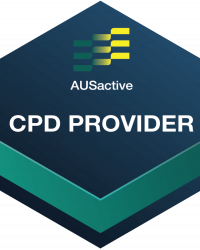Mat Repertoire
Spinal Mobility:
Rolling Like a Ball
Alternate Names
Rolling Back
Derived From
Classical Mat Work: Rolling Back
Primary Element
Mobility
Why for Primary?
To develop and create spinal articulation whilst maintaining a flexed shape of the spine.
Secondary Element
Stability
Why for Secondary?
To develop balance and control through abdominal muscle activation.
Tertiary Element
N/A
Why Tertiary?
N/A
Repetitions
6-8
Plane of Motion
Sagittal
Targeted Muscles
Spinal flexors and anterior stabilisers primarily:
- Rectus abdominis
- External and internal obliques
- Transverse abdominis
Hip flexors and hip extensors, hip adductors, knee extensors as well as shoulder extensors and elbow flexors also accompany the movement in this exercise.
Warnings
This exercise may be unsuitable for clients where inversion or spinal articulation is contraindicated as this would cause pain. Also watch for clients going up too high on the neck, aim to stay as high as the back of the shoulders.
It may also be unsuitable for clients where flexion and/or abdominal activation is contraindicated or would cause pain.
Execution
Sit tall on the Mat from ischial tuberosities (sitting bones) with the legs adducted and bent and the knees drawn up towards the chest. Take the hands to the front of the shins, holding the wrist or forearm of one hand with the other. Let the head draw as close as possible to the knees. Roll back off the sitting bones and balance with the feet floating off the Mat.
Inhale or lose your breath as you roll the spine back onto the Mat – aiming to stop at the shoulder girdle (not the neck). Exhale to engage abdominal muscles to maintain flexion of the spine and roll back up to the balance position.
Observations
Do a body scan of the client taking note of the following points
- Pelvis
- Can the client balance at the top of the Mat on their ischial tuberosities (sitting bones)?
- Is the client collapsing into a ball shape or can they maintain abdominal connection and control throughout the movement?
- Does the client wobble when they reach the top and try to balance? Place the hands onto the outside of the knees and abduct to engage gluteals to assist with stability
- Legs
- Is there space between the heels and gluteals? And between the quadriceps and abdominals? Can the client maintain those spaces when moving?
- Feet
- Are the fleet softly plantarflexed with the ankles connected throughout the movement?
- Arms
- Are the arms actively holding the legs, with the hands gently pressing into the shins?
- Are the elbows wide and relaxed?
Learning Style Technique Cues
Auditory – word associations that connect mind and body
- Maintain connection from the bottom ribs to the ASIS (hip bones) in the C-curve
- Press the shins into the hands and vice versa to help maintain the spaces between the legs and the torso
- Say the client’s name when you’re about to interact with them
Visual
- Imagine a consistently paced movement, without momentum, that doesn’t stop or start at any obvious point
- Keep the eye line or gaze to the knees throughout, without over-dropping the chin
- You may demonstrate a part of the movement as a visual representation for the client to see
Kinaesthetic
- Avoid straightening out through the spine on the way up, maintain the rectus abdominis (upper abdominal) connection and C-Curve shape throughout
- Feel the space between the quadriceps and abdominals, and gluteals and heels, aiming to maintain those spaces the whole time
Modifications and Variations
Regress the exercise by
- Reducing the range of motion and only rolling a centimetre back and forward again, aiming to reduce the use of momentum
- Putting a slightly deflated Pilates ball between the heels and gluteals to maintain the space
- Reducing the repetitions and/or pace
- Working on Abdominal Work: Roll Back
Progress the exercise by
- Increasing the repetitions and/or pace
- Pausing when rocked back onto the shoulders before coming back up with control
- Placing the elbows on the knees (if the elbows lift on the way down, you need more low abdominal engagement. If the elbows lift on the way up, you need more upper abdominal engagement)
- Working towards: Spinal Mobility: Roll Over
- Working towards: Spinal Mobility: Open Leg Rocker
- Working towards: Abdominal Work: Boomerang
- Working towards: Single Leg Stretch (if following the classical order)
- Working towards Reformer Feet in Straps: Short Spine Massage
Series and Transitions
This exercise is part of the Spinal Mobility series which includes a range of other exercises in the fundamental and progressive repertoire. The Spinal Mobility series can also be found in the Reformer, Wunda Chair and Cadillac repertoire.
Inspired Academy follows the below order to focus on stability, before adding mobility and strength.
Fundamental repertoire
- Supine Spine Twist
- Rolling Like a Ball
- Seated Spine Stretch
- Seated Spine Twist
- Saw

